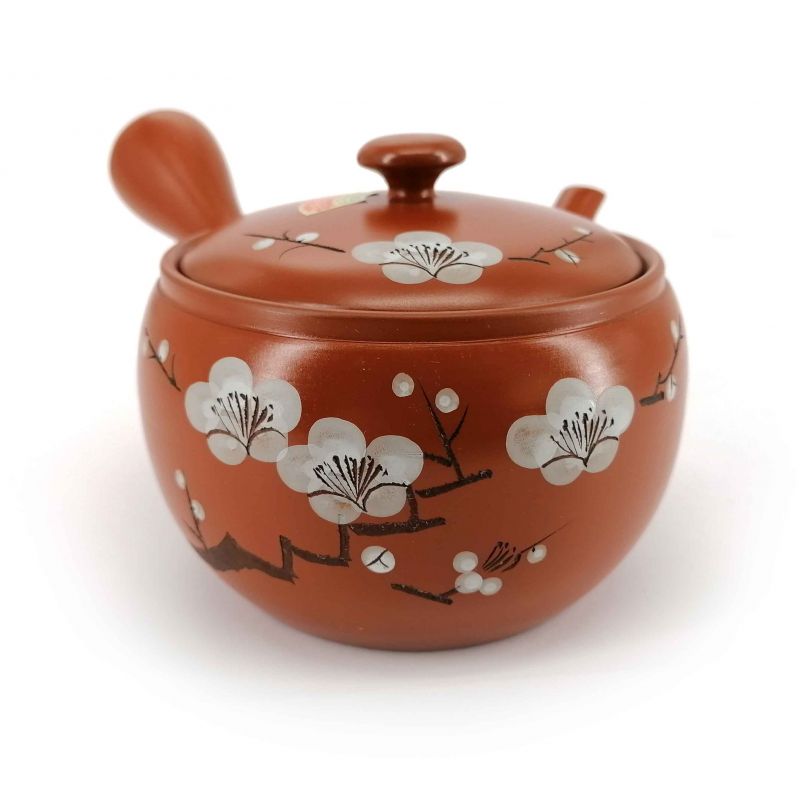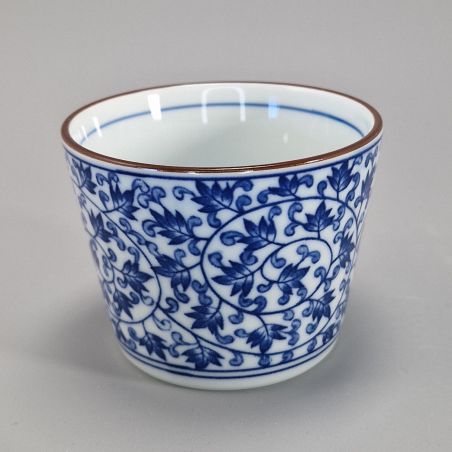
Secure payment
Payment by credit card, check and bank transfer.
Sending around the world
Shipment anywhere in the world and in the European Union without customs duties.
Satisfied or refunded
You have 14 days to return your order without reason.
Japanese terracotta tokoname kyusu teapot - TOKONAME UME
Japanese terracotta tokoname kyusu teapot - TOKONAME UME
Brand
DELIVERY AND RETURNS
Delivery delay :
1 to 3 working days for France, Belgium and Switzerland.
3-5 working days for other countries in Germany, Italy, Spain, United Kingdom, Netherlands, Denmark and Austria
3-5 business days for other countries via DHL
This item is shipped from our warehouse in France.
You can return or exchange an item within 14 days of receiving your order. For more information, see our Return Policy
Technical Data
| Color | red white |
|---|---|
| height | 9 cm |
| width | 14 cm |
| length | 16 cm |
| capacity | 520 cc |
| Compositions | Terracotta |
Read more
A kyusu teapot can take various shapes, however some characteristics do not change. It has a side handle and an integrated ceramic or stainless steel filter, large enough for green tea infusions, where you can find small fragments. This allows you to keep the balance of the flavors of your infusion, allowing the aromas to pass through their golden mean.
The kyusu teapot has a large opening on its upper side
to allow the leaves to be handled easily and thus give them the necessary space so that they can develop their flavors.
Also, its unglazed interior allows your tea to be in direct contact with its porous walls. Thus, with each passage of the tea, the teapot keeps in memory this singular flavor which will bring a subtlety during its use. Please therefore use only one type of tea, at the risk of breaking its flavor.
A few words about their creators.
These teapots are hand-painted by a Kutani painter on black mud teapots made by traditional Tokoname craftsmen. This is a traditional craft product made by potters who have been producing pottery for many years in Tokoname and Kutani, two pottery production centres that have retained their long-standing traditions. The teapot is made of red clay and is thin, light and easy to use. Various techniques such as blue grain, red grain, gold leaf and silver box transfer glaze painting are skillfully combined and painted in balance with the shape of the teapot.
https://youtu.be/mxvpFs2XYCwQuestions about our teapots?
Where does the Tokoname teapot come from? What are the characteristics of the Tokoname teapot? How to maintain your teapot? Where does the Tokoname teapot come from?From the town of Tokoname in Aichi Prefecture, which faces Ise Bay and has a long history and tradition of pottery, being one of the six oldest kilns since the Edo period. The typical pottery produced here is the teapot. In Tokoname, teapots are made either in moulds called ikomi (casts) or by hand using a potter's wheel. The more a teapot is used, the brighter it becomes, and the more the character of the user stands out.
The Tokoname teapot is made from clay rich in iron oxide, which reacts with the tannins in the tea during use, removing bitterness and softening the tea, making it more flavourful. The body and lid are made with mortise and tenon joints - the teapots use a technique called "mortise and tenon". Suriawase means that the body and lid of the teapot are rubbed together individually to make a lid that matches the body of the teapot. A well mortised teapot will not rattle and can be used comfortably.
How to maintain your teapot?- Always rinse with water after serving the tea to keep it clean.
- In case of clogging, dry the inside of the teapot and lightly scrub the filter part with a toothbrush, then rinse it well. The tea grounds can be easily removed.
- It is convenient to use two or more teapots in turn.
How to make a delicious tea in 4 steps!
Sencha (Hot water infusion)Step 1: Add the tea leaves to your teapot. (4g: 2 teaspoons)
Step 2: Pour hot water into your teapot. (Temperature of the hot water 80°C)
Step 3: Wait for the water to cool down. (Wait 60 to 90 seconds)
Step 4: Pour evenly little by little until the last drop.
| Quantity of tea leaves | Water temperature | Quantity of water | Brewing time |
| 4g | 70°C (high quality sencha) 80-90°C (normal sencha) | 200ml | 60-90 seconds |
Indication: High quality sencha is rich in umami (amino acids) and is brewed at low temperatures to reduce astringency and bring out its full flavour. Regular sencha contains less umami (amino acids) and more astringency (catechins) than high quality sencha, which brings out its aroma and moderate astringency.
Fukamushicha (Rapid Infusion)Step 1: Add the tea leaves to your teapot. (4g: 2 teaspoons)
Step 2: Pour hot water into your teapot. (Temperature of the hot water 80°C)
Step 3: Wait for the water to cool down. (Wait 30 seconds)
Step 4: Pour evenly little by little until the last drop.
| Quantity of tea leaves | Water temperature | Quantity of water | Brewing time |
| 4g | 80°C | 150-200ml | 30 seconds |
Indication: Fukamushicha has thin tea leaves and the ingredients are easy to dissolve, so the brewing time should be short.
Gyokuro (Slow brew at low temperature)Step 1: Pour hot water into your teapot. (Temperature of the hot water 60°C)
Step 2: Add the tea leaves to your teapot. (6g: 3 teaspoons)
Step 3: Wait for the water to cool down. (Wait 2 minutes)
Step 4: Pour evenly little by little until the last drop.
| Quantity of tea leaves | Water temperature | Quantity of water | Brewing time |
| 6g | 60°C | 100ml | 2 minutes |
Indication: Gyokuro takes time in low temperature water to bring out the umami ingredients.
seen recently
TRUSTED SHOP CUSTOMER REVIEWS


.jpg)



































































































